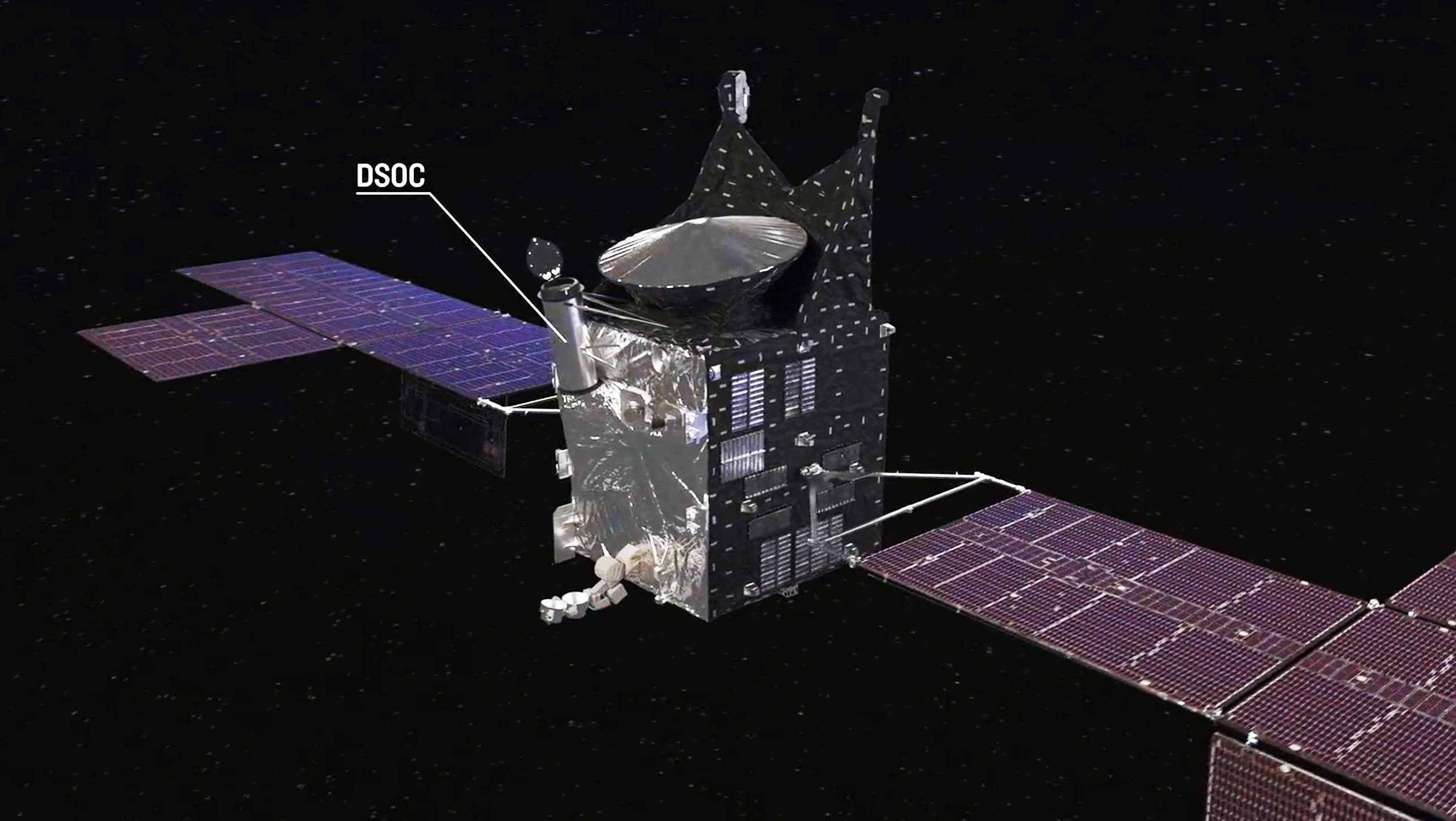Demo riding with NASA's Psyche to test high-bandwidth laser communications in deep space

- Country:
- United States
NASA's Deep Space Optical Communications (DSOC) technology demonstration is an experiment launching aboard the agency's Psyche spacecraft on October 5. The groundbreaking technology could increase bandwidth to transmit more complex science data and even stream video from deep space in the future.
DSOC - a near-infrared laser transceiver that can send and receive data - will test high-bandwidth optical communications to Earth during the first two years of the spacecraft’s journey to the main asteroid belt, marking the agency's first test of high-bandwidth optical communications beyond the Earth-Moon system.
The transceiver riding on Psyche features several new technologies including a near-infrared laser transmitter to send high-rate data to the ground system, and a cutting-edge photon-counting camera to receive a ground-transmitted laser. The camera is attached to an 8.6-inch (22-centimeter) aperture telescope that protrudes from the side of the spacecraft.
Among other key goals, DSOC will demonstrate a data uplink up to a distance of 1 astronomical unit (the average distance between the Earth and Sun - 93 million miles/150 million kilometres).
\The Deep Space Optical Communications experiment will take laser communications to the next frontier: deep space. On Sept. 20 at 1pm EDT, hear from NASA experts about the goals of this pioneering tech demonstration, launching with the #MissiontoPsyche: https://t.co/quvLzcea2W pic.twitter.com/2DYp6j16Y1
— NASA Technology (@NASA_Technology) September 15, 2023
Why laser/optical communication?
NASA is testing optical communication technologies because it has the potential to surpass the bandwidth of radio waves used in space today. Laser communications can empower missions with data rates at least 10 to 100 times higher than current radio telecommunications systems, enabling higher resolution images, larger volumes of science data, and even streaming video to be transmitted to Earth.
Last year, NASA's TeraByte InfraRed Delivery system downlinked the highest-ever data rate from a satellite in low-Earth orbit to a ground-based receiver.
DSOC will pave the way for establishing higher data-rate returns from future human and robotic missions to Mars and beyond.










